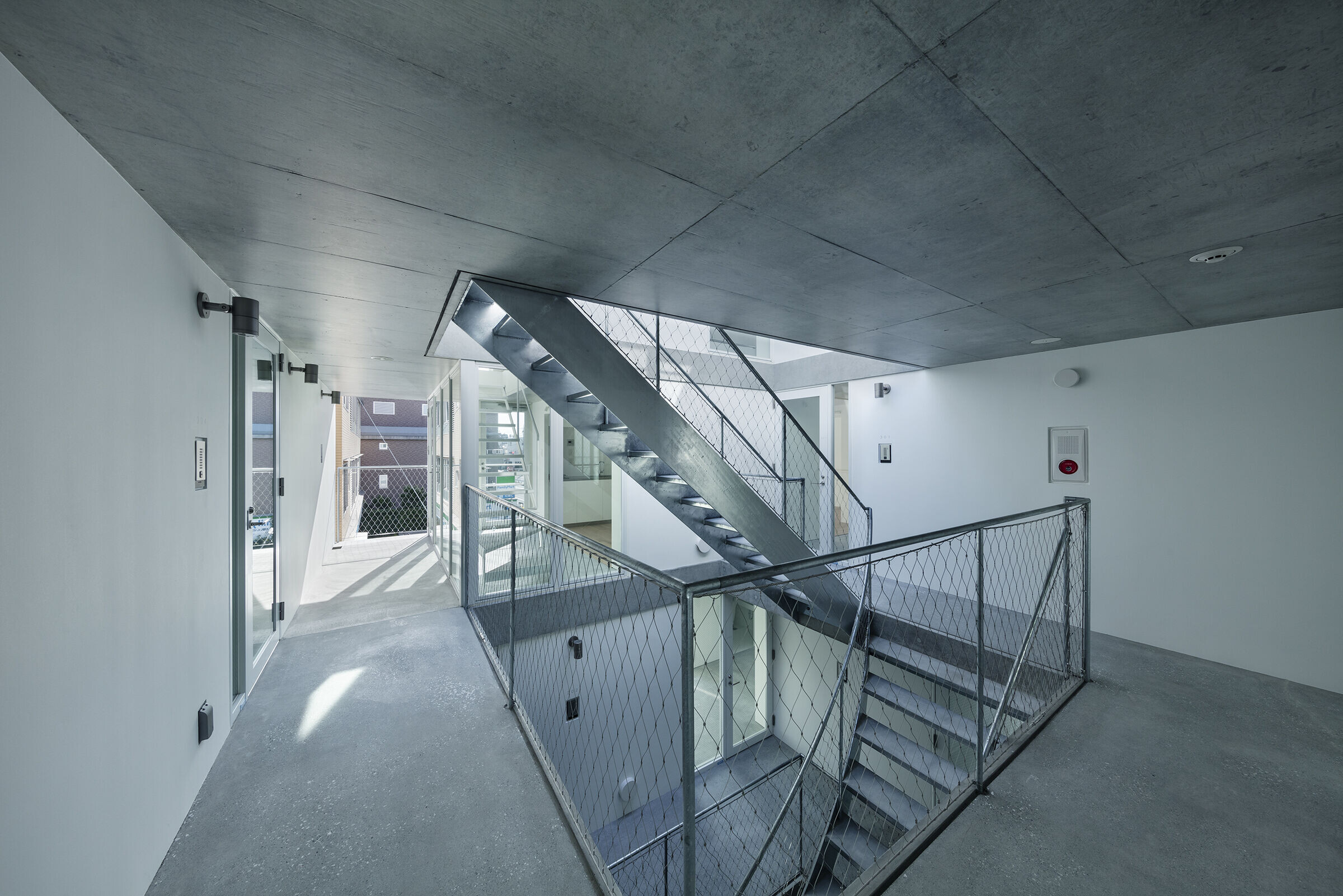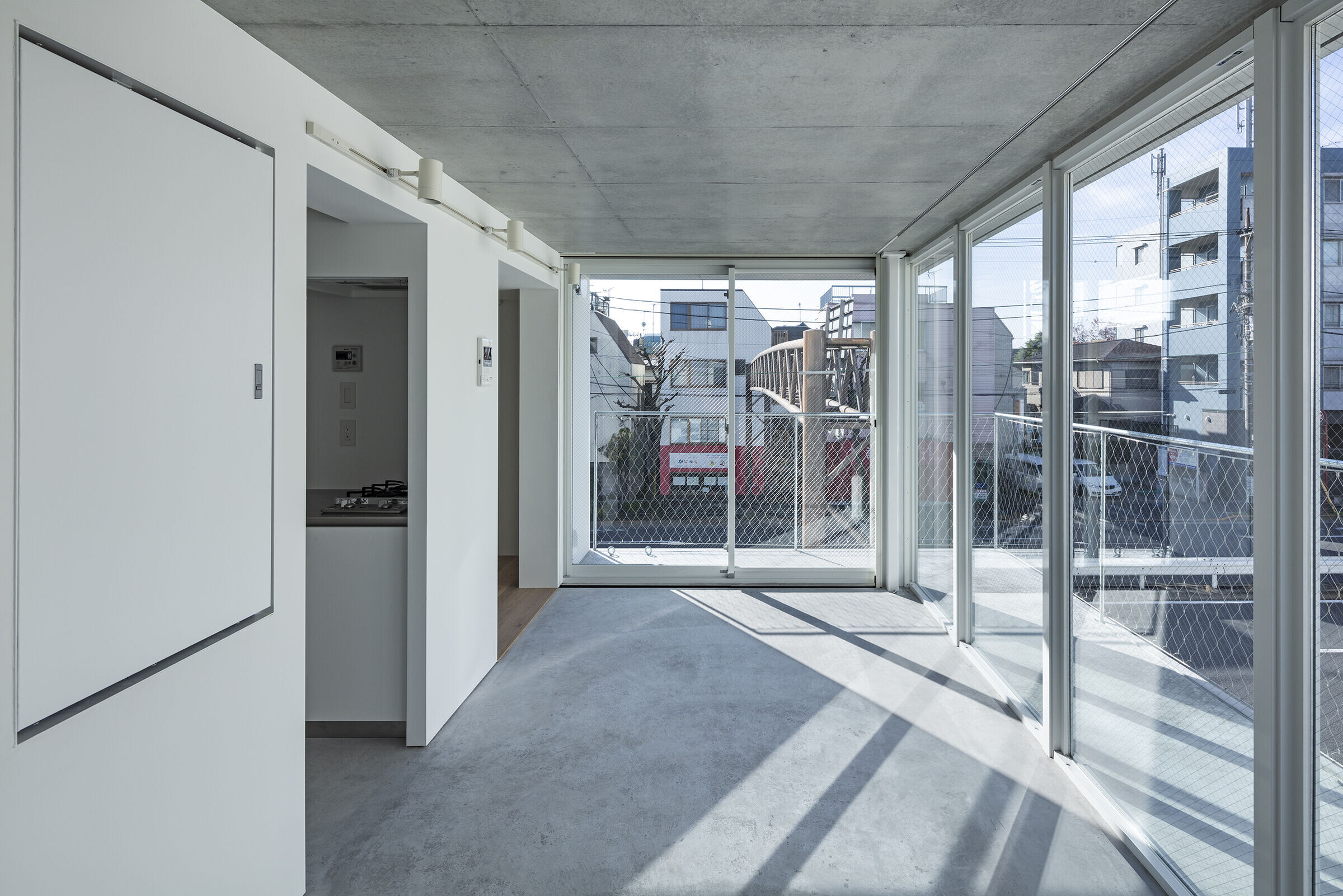A 19-unit housing complex of 25m2 apartments built along the main road in Setagaya, Tokyo.
In recent years, there has been a trend in many fields to revisit the idea of possession, replacing it with the rent of a good. Therefore, the subscription plans started spreading in both the digital and real environments.
This new perception of possession radically altered our approach and attachment to the same goods we subscribe for, giving somehow a sense of a shared property with future customers.

However, despite some recent factors changed, when speaking of buildings the common perception still remains of a conventional delimited space that provides privacy and security to the users.
This has been the starting point of the project: in fact we tried to create a housing building that could feature a succession of fills and voids, aiming to a shared way of living between various landowners.


The project considers the suburban environment a part of daily life, and aims to remove the differences between the city and residences by engraving holes in a closed mass.

To do this, the ground floor is open to both the external urban surroundings and the common areas inside the building. Then, the area divisions that used to be clearly defined as urban environment, private and common space have been transformed into gradations. This will begin the reconsideration of the living concept. These gradations are meant to result in a fragmented scene where the lives of individuals seep into the city: by “living together” they start to take on a single entity, generating a new landscape in the urban area.



The staircase placed in the center of the plan wants to recreate a public square-like feeling in the first floor, with the ramp developing from a concrete podium that can be used as a bench suitable for people to sit and share the space together. To enhance the gradation feeling, the staircase is open to the sky allowing light, sounds and ambience from outside to enter on the inside.

As aforementioned, the starting point of the design was to create a gradual transition from the outside public space to the enclosed private one: the walls and entrances to each unit are made of glass, granting a bigger amount of natural light on the interior, while also negating the seclusion of the apartments. Furthermore, the concrete floor is the same inside the apartments and in the public corridors. Privacy is obviously still provided with some walled wooden flooring rooms in each unit, but they come as a gradual process from the outside.

The façade presents a clear distinction between the concrete slabs and the white painted walls: the slab had to structurally include the beams, so we decided to make them visible and use them together with the openings to separate the units from each other.









































